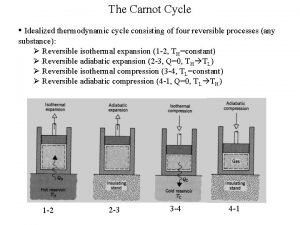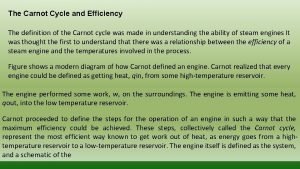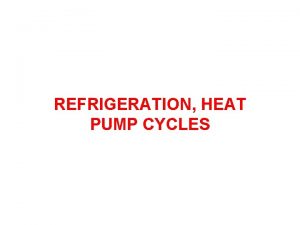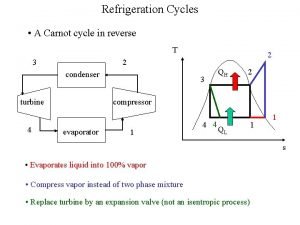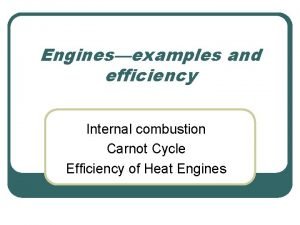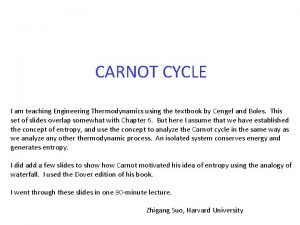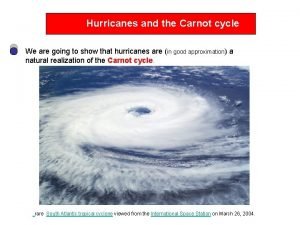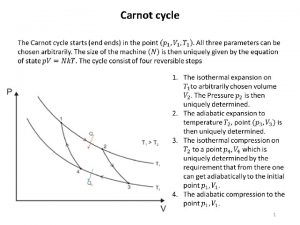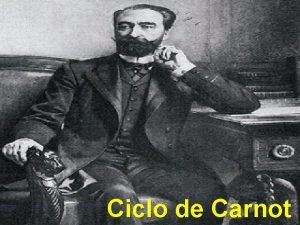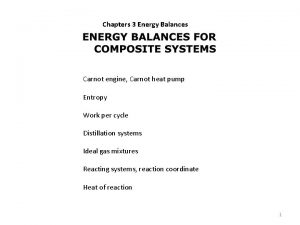Hurricanes and the Carnot cycle We are going








- Slides: 8

Hurricanes and the Carnot cycle We are going to show that hurricanes are (in good approximation) a natural realization of the Carnot cycle. rare South Atlantic tropical cyclone viewed from the International Space Station on March 26, 2004.

Some basics about tropical cyclones for details read • tropical cyclones: a storm system with a closed circulation (cyclonic) around a center of low pressure that originates over tropical oceans and is driven principally by heat transfer from the ocean counterclockwise circulation in the Northern Hemisphere • Categorization of tropical cyclones: maximum averaged wind speed 17 m/s or less tropical depression 18 to 32 m/s tropical storm called hurricanes in the western North Atlantic and eastern North Pacific regions 33 m/s or greater typhoons in the western North Pacific severe tropical cyclones elsewhere

Structural elements of a tropical cyclone • Basic flows Primary circulation origin of circulation is the Coriolis force velocity in the rotating frame angular velocity of rotating frame (earth) Fictitious force in the rotating reference frame of the earth Low pressure region Brief reminder to the Coriolis force: Intuitive for : Exact: ac Coriolis force

• Eye, Eyewall and Rainbands Secondary circulation o et igh yh r click for animation Ve s nd wi rva e ns co e pe f no o i t u dd g an r ula tum mo n me

The hurricane as a Carnot heat engine see for details A B: air undergoes isothermal expansion as it flows toward the lower pressure of the storm center while in contact with the surface of the ocean (heat bath @ Ts 300 K) B C: Adiabatic (very fast) ascent of the air C D: air flows out at the top of its trajectory and is incorporated from the extreme low pressure region into other weather systems via an isothermal compression (heat bath @ T 0 200 K) D A: air undergoes an adiabatic compression when loosing altitude fast

PV-Diagram of the hurricane Carnot engine A B D Ts=300 K C T 0=200 K C B D A

Where does the work go which the hurricane produces from the heat of the ocean Work drives the wind with surface speed Devastation by hurricane Katrina, City of Huntington Beach stationary state: Generated work per time dissipated (friction) ( because • dissipation • rate of heat transfer from the ocean to the atmosphere ) quantifies thermodynamic disequilibrium between the ocean and atmosphere

We know the textbook efficiency of a Carnot engine: important difference to textbook Carnot cycle tropical cyclones textbook Carnot cycle work used for turbulent dissipation =work done on environment transformed back into heat @Ts back into the front end of the Carnot cycle heat from the ocean and Heat from turbulent dissipation where E: =b/a theoretical upper bound on hurricane wind speed note T 0 <Ts


